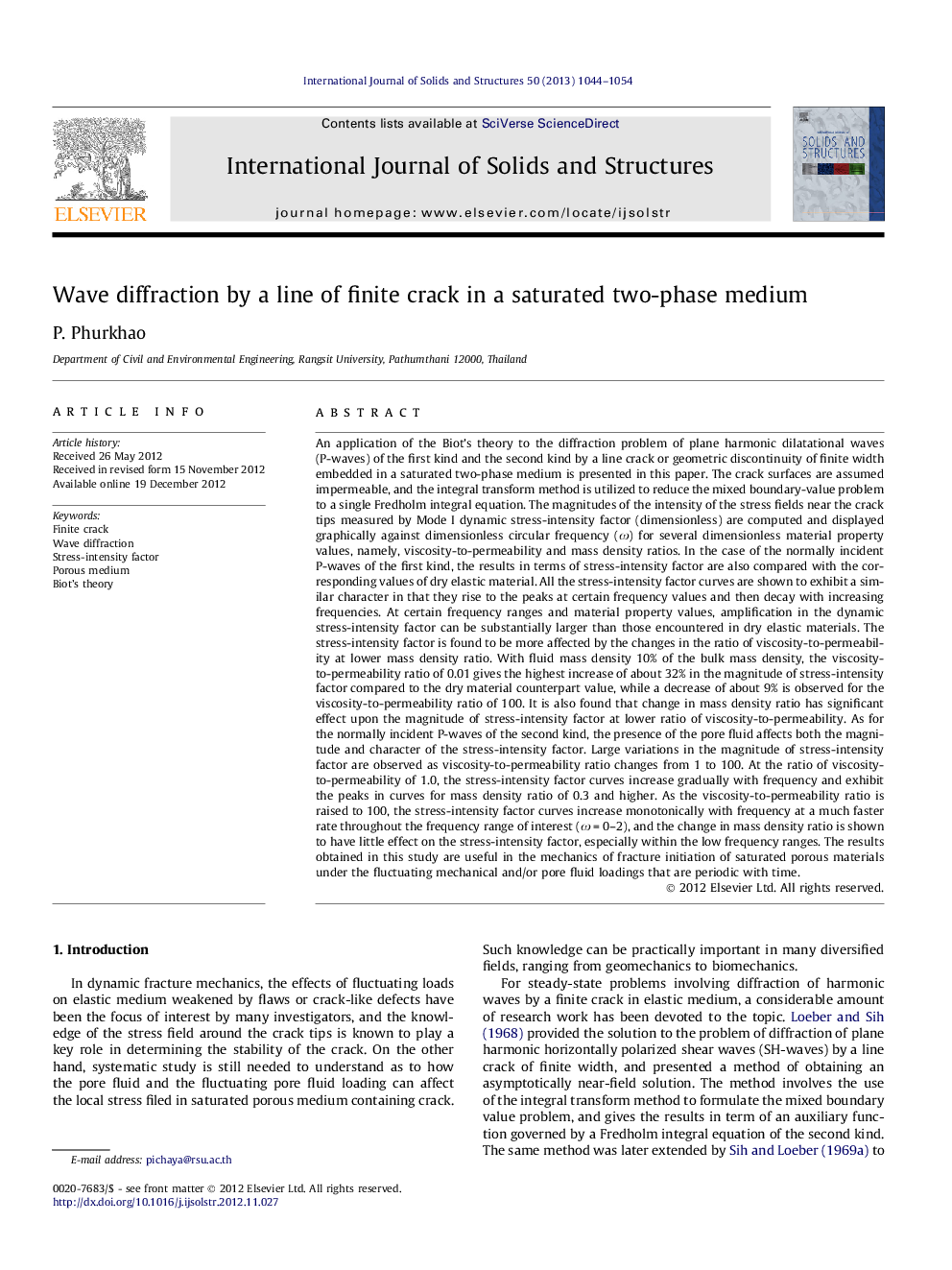| کد مقاله | کد نشریه | سال انتشار | مقاله انگلیسی | نسخه تمام متن |
|---|---|---|---|---|
| 277994 | 1430261 | 2013 | 11 صفحه PDF | دانلود رایگان |

An application of the Biot’s theory to the diffraction problem of plane harmonic dilatational waves (P-waves) of the first kind and the second kind by a line crack or geometric discontinuity of finite width embedded in a saturated two-phase medium is presented in this paper. The crack surfaces are assumed impermeable, and the integral transform method is utilized to reduce the mixed boundary-value problem to a single Fredholm integral equation. The magnitudes of the intensity of the stress fields near the crack tips measured by Mode I dynamic stress-intensity factor (dimensionless) are computed and displayed graphically against dimensionless circular frequency (ω) for several dimensionless material property values, namely, viscosity-to-permeability and mass density ratios. In the case of the normally incident P-waves of the first kind, the results in terms of stress-intensity factor are also compared with the corresponding values of dry elastic material. All the stress-intensity factor curves are shown to exhibit a similar character in that they rise to the peaks at certain frequency values and then decay with increasing frequencies. At certain frequency ranges and material property values, amplification in the dynamic stress-intensity factor can be substantially larger than those encountered in dry elastic materials. The stress-intensity factor is found to be more affected by the changes in the ratio of viscosity-to-permeability at lower mass density ratio. With fluid mass density 10% of the bulk mass density, the viscosity-to-permeability ratio of 0.01 gives the highest increase of about 32% in the magnitude of stress-intensity factor compared to the dry material counterpart value, while a decrease of about 9% is observed for the viscosity-to-permeability ratio of 100. It is also found that change in mass density ratio has significant effect upon the magnitude of stress-intensity factor at lower ratio of viscosity-to-permeability. As for the normally incident P-waves of the second kind, the presence of the pore fluid affects both the magnitude and character of the stress-intensity factor. Large variations in the magnitude of stress-intensity factor are observed as viscosity-to-permeability ratio changes from 1 to 100. At the ratio of viscosity-to-permeability of 1.0, the stress-intensity factor curves increase gradually with frequency and exhibit the peaks in curves for mass density ratio of 0.3 and higher. As the viscosity-to-permeability ratio is raised to 100, the stress-intensity factor curves increase monotonically with frequency at a much faster rate throughout the frequency range of interest (ω = 0–2), and the change in mass density ratio is shown to have little effect on the stress-intensity factor, especially within the low frequency ranges. The results obtained in this study are useful in the mechanics of fracture initiation of saturated porous materials under the fluctuating mechanical and/or pore fluid loadings that are periodic with time.
Journal: International Journal of Solids and Structures - Volume 50, Issues 7–8, April 2013, Pages 1044–1054